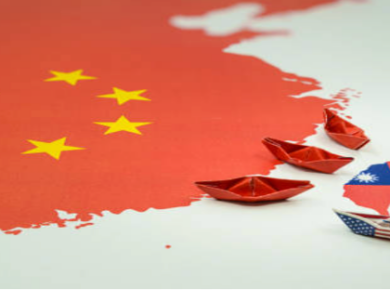Disclaimer: This post reflects solely the opinion of the authors and should not be taken to represent the general views of IPPR’s management/ editorial team or those of fellow authors
Since the beginning of 2021, natural gas prices in Europe have been rising steadily, and have spiked even higher with Russia’s invasion of Ukraine. This has pushed millions of Britons into a state commonly known as “energy poverty”. Energy poverty occurs when a “household spends more than 10% of its income on fuel to maintain an adequate level of warmth”. Access to energy to heat and light homes and cook food has long been thought of as a problem confined to developing countries, not something that the advanced economies of Europe and North America have to deal with. This, as can be seen in the example of Britain, is not true. Millions of people in these countries struggle, and governments and development organizations largely overlook it because current metrics and policies are not tuned in to recognize it. Moreover, many of these countries pour billions into renewable energy projects that actually help to cause these problems. Policymakers need better metrics and tools to identify and ameliorate these issues.
Another example of energy poverty in the First World is the case of Germany. The largest economy in Europe has long had a focus on transitioning away from coal fired power plants, placing an emphasis on using renewable energy in public grids. This, however, has led to some of the highest energy costs in the world. As a result, 17% of Germans were classified as living in energy poverty in 2019.
The US has a similar problem. A 2016 paper found that Vermont– a state known for its high living standards and green-leaning tendencies– had more deaths attributable to energy poverty than car crashes. The researchers concluded that part of the cause was the high cost of electricity from reliance on renewable sources, rather than using cheaper fossil fuels.
So, is the solution to this problem to simply shun renewable energy? Of course not. Climate friendly energy production is a vital part of the solution to combating climate change more broadly and is well worth the costs. Additionally, in less developed countries, renewable energy technologies can serve as a key part of the solution to energy poverty.
India, for example, has a severe problem with access to energy. 700 million people still use solid fuels, such as dung cakes and firewood, for cooking and 244 million people still lack access to electricity; the problem is accentuated in rural areas. These options are expensive and have significant negative impacts on the environment as well as the health of those who use them. However, cleaner sources of fuel, such as kerosene or propane, prove prohibitively expensive. Scholars and activists have proposed renewables as a possible solution to these problems in India. Distributing small renewable production devices, such as micro-hydro-plants, allows households and rural communities to produce enough electricity to light their homes and cook their meals.
Herein lies the conundrum for development: in developing countries, renewable energy can provide a powerful source of change in the health and welfare of communities. However, in developed countries, the push to adopt those same technologies has hurt many of their poorest residents due to rising costs. Renewable energy has to be a part of development plans, but its secondary and tertiary effects on energy costs, day to day life, and on those most vulnerable members of society must be taken into account. it cannot go on like it has been. Energy costs have to be taken into account in the future. Developing countries, such as India, are actually doing much better in this regard than the US and EU; the Indian government has placed an emphasis on making electricity accessible and affordable, with stunning results- over 700 million Indains gained access to electricity from 2000 to 2018. This effort was made possible because of the Indian government’s acknowledgement of the energy poverty problem, and commitment to solving it.
Currently, the US has not formally recognized energy poverty as distinct from generalized poverty. Additionally, there is no formal definition of energy poverty in the EU, with many countries having no definition at all.Under our current logic and metrics for development, it is easy to see how this occurred. If the US has one of the highest GDP per capitas in the world, produces the most natural gas and oil in the world, why would it need to worry about its citizens being able to afford energy? Governments, even those with the highest GDPs, need to recognize energy poverty as a legitimate issue.
Metrics for how we measure development also need to change. Yale University’s William Nordhaus introduced the idea of measuring economic development by the amount of light hours that a person could buy with a day’s labor. For example, an ancient Mesopotamian could buy roughly 10 minutes of candle light with a day’s labor. Today, due to electricity and fluorescent bulbs, one could buy over 10 years of light with 1 days labor. This takes into account both income and technology, and some researchers have already started using it to map development in India. Incorporating this metric– lumen hours per hour worked– could help developed countries to identify those at risk of energy poverty in the future and address the underlying issues. For example, if this metric were used in the development of future renewable energy projects, developers could identify those who would see marked increases in energy costs as a result. Policymakers could then include funding clauses to subsidize energy costs for those pushed into energy poverty as a result of their construction.While energy poverty remains a problem in all the world’s economies, it looks drastically different in the developing and industrialized worlds. Solutions need to pair sustainability with social responsibility to tackle the dual– and often intertwined– problems of climate change and inequality. Incorporating these recommendations is vital in creating a brighter, greener future for everyone.
By William Bradshaw,
William Bradshaw is a student at George Washington University studying International Affairs and Economics.







